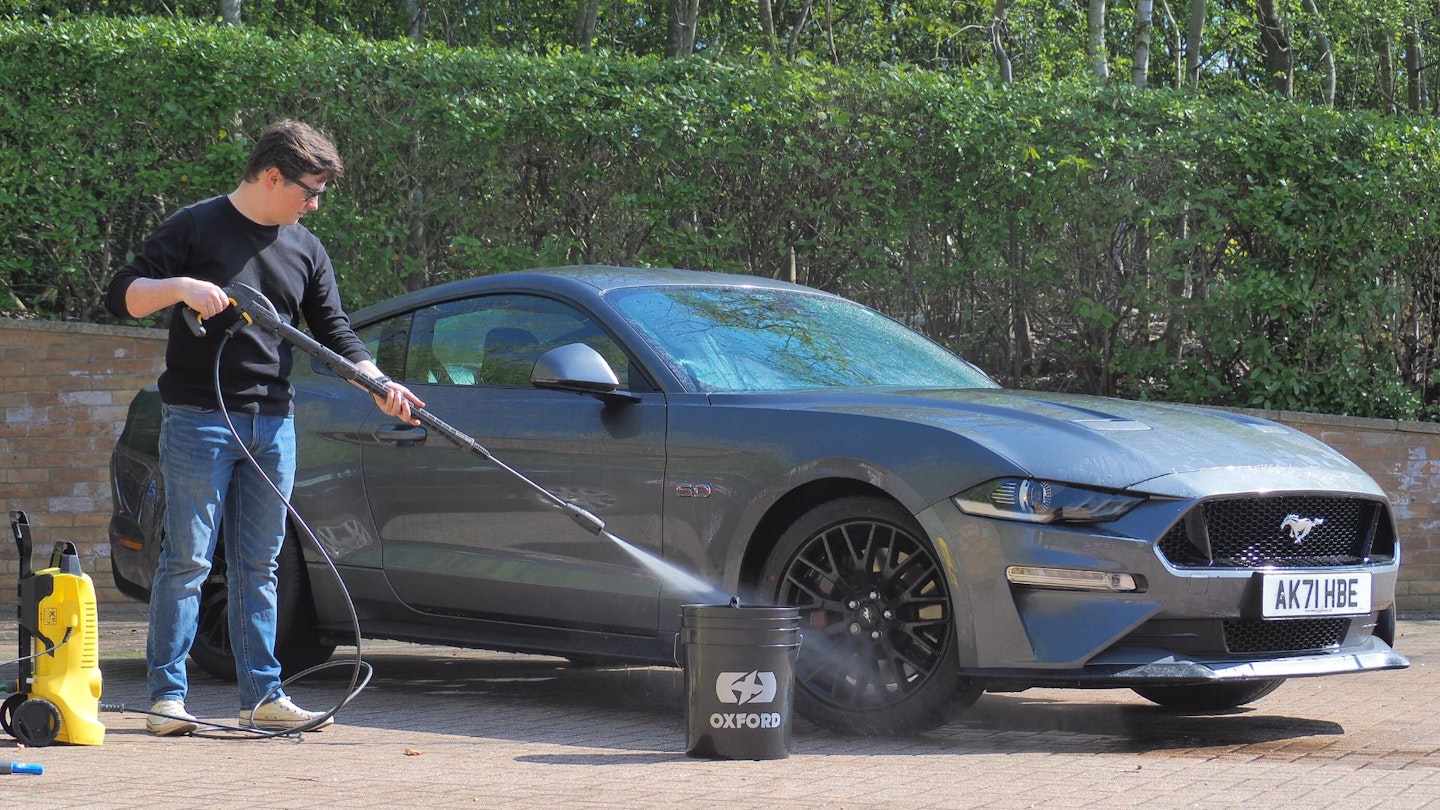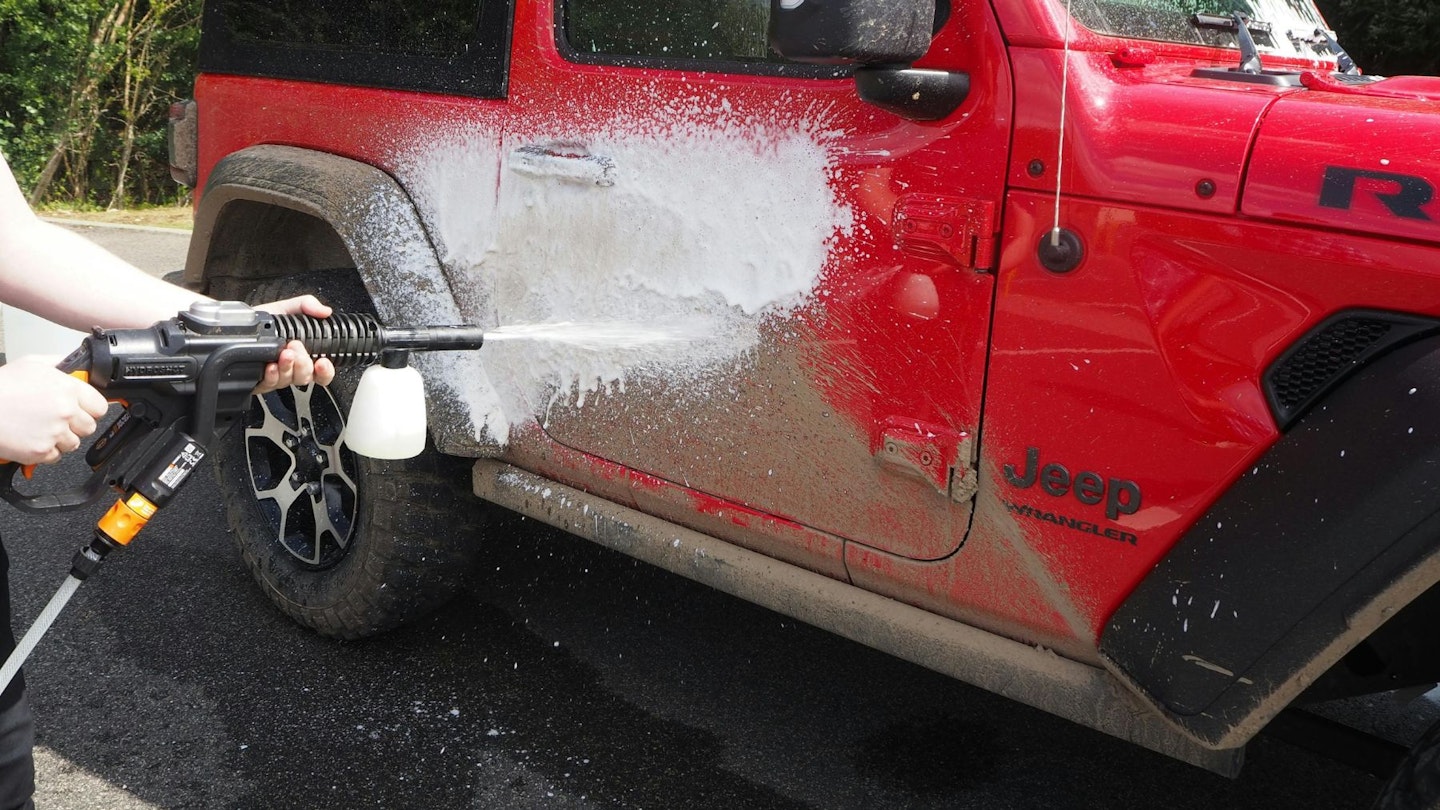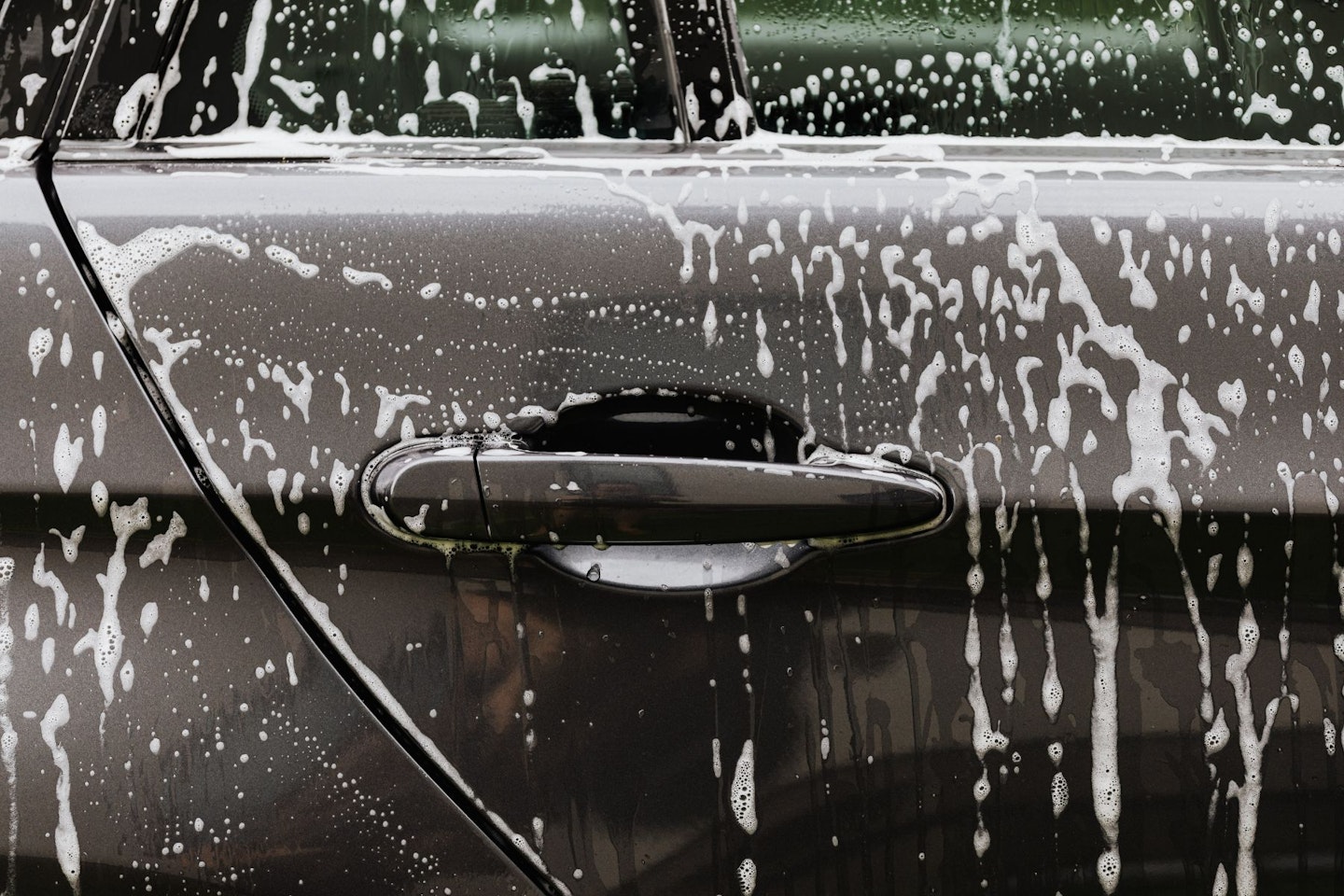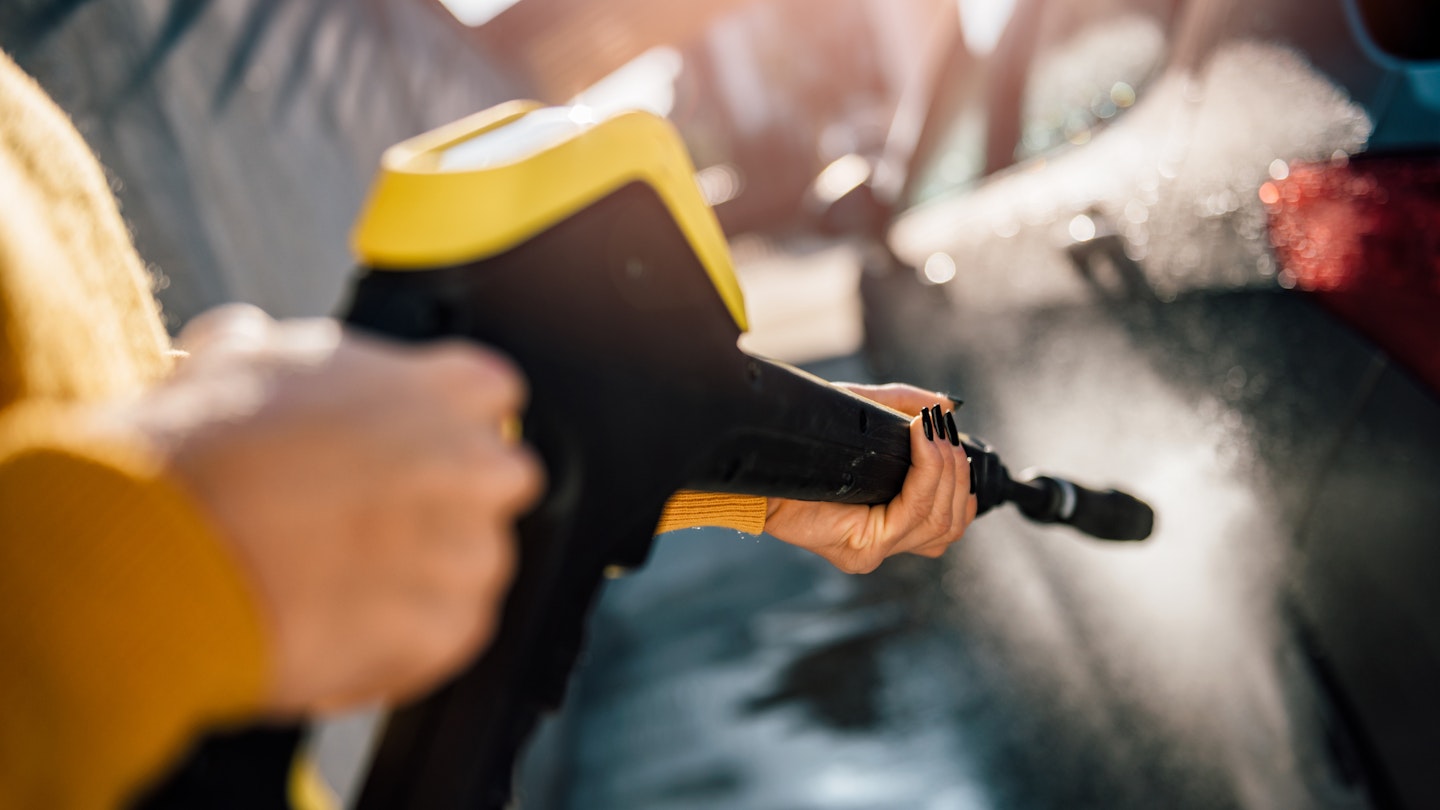The most paint-friendly method of car cleaning, short of sealing it away forever, has to be touchless car washing. Traditional car washing will leave tiny scratches in a car's paintwork, as tiny pieces of debris will inevitably be dragged across the car's bodywork. Even the sudsiest, most lubricating car shampoo can only offer so much protection against a rogue piece of gravel.
As the name suggests, a touchless car wash removes the manual cleaning aspect from car cleaning, i.e. you. Instead of getting busy with your hands, you apply all the products via a pressure washer and let them chemically clean the car. This will totally eliminate any chance of scratches as the most aggressive force you'll be applying will be pressurised water.
There are even automated touchless car washes that thankfully skip the massive flailing bristles and instead use strong cleaners to remove dirt. These do however often use aggressive traffic-film removers (TFRs) which can strip away protection and so are best avoided, like any automated car wash.
How do I do a touchless car wash?
Before attempting a touchless wash, make sure that your car's bodywork is cool and is parked in some shade.
As you'll be increasing the dwell time of any applied products to compensate for the lack of physical agitation, you'll need to take some steps to stop the chemicals from drying on the paint. It's for this reason it's also advisable to work either in the morning or late in the afternoon and avoid the midday heat.
Step one: rinse

This step should be reserved for the muddiest car, like mud-bogging off-roaders or just-used rally cars. If your car is only slightly mucky, feel free to skip straight to step two. This task will be to remove any larger pieces of dirt using the power of a pressure washer. This stage is incredibly simple, spray every inch of your car with water ready for the next stage.
There's a debate on whether pre-rinsing the car is needed. I often only deploy it to either remove huge clumps of mud that could fill a plant pot, or to cool down the surface of the car.
Step two: Prewash

The first chemical you'll be applying is also the coolest, snow foam. Stick the foam lance onto the pressure washer and apply the foam to every part of the car in question, starting at the bottom and working upwards.
Snow foam is part of the prewash family of car care products and will soften and loosen grime and muck to prepare the car for the shampooing stage. Read the instructions on the snow foam bottle to see how long it can dwell before rinsing off using the pressure washer.
For filthy cars, a citrus prewash can be applied before the snow foam and then layered with snow foam. The citrus prewash will aid in cutting through the worst of the grime.
Step three: Shampoo

Put the bucket down. Instead, you need to source a car shampoo capable of being applied via a foam lance, much like snow foam. Plenty are on the market, and they have the distinct bonus of using less product to clean a car than the bucket method. Once sprayed on, leave the shampoo for a couple of minutes before washing off with water. You'll probably notice that the shampoo foams slightly on the bodywork but nowhere near the same thickness as snow foam.
Step four: Sealant

By no means an essential step, adding some extra protection via a pressure washer sounds like a real time-saver to us, especially when the alternatives include painstakingly applying a protective coating. While pressure washer-applied sealants won't offer months of protection, they can quite quickly provide eight weeks of hydrophobic protection, making future washes much more accessible. Follow the instructions on the bottle, and remember to rinse off any excess product thoroughly.
Step five: Dry
The final part is the part that's usually hardest to do without touching the car, getting it dry again. Microfibres are very soft and a good choice but still carry that minute scratch risk if a bit of grit gets caught between it and your paintwork. . These use powered air to help push the water off the panel and away from small nooks and crannies, like a massive hairdryer.
Is a touchless car wash suitable for my car?
That depends on how dirty your car is.
If there is a lot of mud and other embedded containments in your paintwork (like insects, bird poo and tree sap) then it's better to wash your car the old-fashioned way as these contaminants require some proper elbow grease to shift. If your car is only slightly dirty or has a ceramic coating applied then by all means the touchless washing method will be a perfectly acceptable way of keeping your car clean.
Ryan Gilmore is the Deputy Autos and Tools Editor for CAR, specialising in car cleaning and hand tools. With an MA in Automotive Journalism, when he's not testing buckets he can be found looking at old Porsches.
